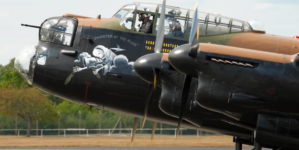-
ROSSLARE EUROPORT TARGETS HEALTH & SAFETY WITH CAMERA TELEMATICS PARTNERSHIP - 2 days ago
-
Landmark Study Reveals Wearable Robotics Significantly Boost Safety and Efficiency in Industrial Environments - July 24, 2024
-
Visku Tackle The Retail Seasonality Challenge One Pallet At A Time - July 22, 2024
-
KAMMAC AND BERGEN LOGISTICS STRENGTHEN FASHION & LIFESTYLE SERVICES IN THE UK - July 19, 2024
-
TENTBOX EXTENDS PARTNERSHIP WITH ARROWXL TO SUPPORT INCREASING DEMAND - July 17, 2024
-
The Perfume Shop improves customer journeys while driving profitability in partnership with Scurri - July 17, 2024
-
ZEROMISSION SECURES £2.3M ($3M) INVESTMENT TO ACCELERATE ELECTRIC FLEETS - July 16, 2024
-
BCMPA CELEBRATES SUCCESS OF 2024 CONFERENCE - July 15, 2024
-
Best of the Best: Jungheinrich Celebrates Triple International Award Win - July 12, 2024
-
GOPLASTICPALLETS.COM CALLS ON NEW CHANCELLOR RACHEL REEVES TO CONSIDER PLASTIC PACKAGING TAX REFORM - July 10, 2024
Solving the Retail and Supply Chain Dilemma.
Retailers are under tremendous pressure from all sides. Huge amounts of time, money and effort are invested in getting shoppers in-store, while many only come in to compare assortment and prices against those of the world’s biggest mall: the internet, which they carry around with them everywhere.
The key to competing against the whole world is proximity; the ability to satisfy consumer needs instantly! After all they’re already in-store, and finding what they want is easy, pleasant and convenient.
Right?
The Retail & Supply Chain Dilemma
But, what if you don’t know what products the customer wants to buy? Or, what if you know exactly what the customer wants but when he or she walks into your store, you’re out-of-stock, or worse, you have stock but it’s not on the shelves. Research indicates that 72% of all out-of-stock situations are due to poor in-store-management. Moreover, depending on the category, up to 4.5% of sales are lost due to out-of-stock situations and of that 25% is due to failure to shelve products.
Of course, the right forecasting & replenishment software, supported by good processes, can ensure that the correct quantities of goods are ordered whatever the season or whatever the product life-cycle. Good store-specific space and assortment planning can also guarantee that the right assortment is in the right store, at the right time, and make sure the stock fits the shelves, so the back room only carries minimal stock.
But although this is well known, and although these tools have been on the market for quite some time now, the overwhelming majority of retailers still face considerable problems in these areas. What’s more, the sort of process failures that lead to stock not being on shelves are simply unsustainable in today’s competitive market.
Unify Your Retail Planning
The only really effective solution is to aim to unify these processes from specification and design up.
For example, imagine what might be possible if store space was planned based on real-time forecasts and, in turn, replenishment planned based on actual available space.
Minor space changes could be made weekly, or even daily, to reflect the projected sales for any single product with minimum and maximum replenishment parameters also fed into the supply chain software. With a refined process, all the stock could be put straight onto the shelves and that on-shelf inventory would extend right through the replenishment cycle.
What’s more, main delivery days, category by category, could be used far more efficiently. Orders could be structured sequentially so that the contents of each pallet would reflect the products that are adjacent on the shelves in the store it’s destined for rather than those that are next to one another in the warehouse.
With a 3-1 ratio of costs between store and DC, ie. operations carried out in store are at least three times more expensive than they are in the DC, the cost savings that could be achieved are significant.
Calculations indicate that by using this approach retailers could reduce their overall supply chain costs by 4-5%.
Conclusion
To a lot of businesses, building a bridge between theory and the reality as it exists at present, will look daunting. But in today’s competitive environment, with cost savings of such a magnitude to be gained, sticking to traditional ways of doing things is a guaranteed way of shackling business growth.

































